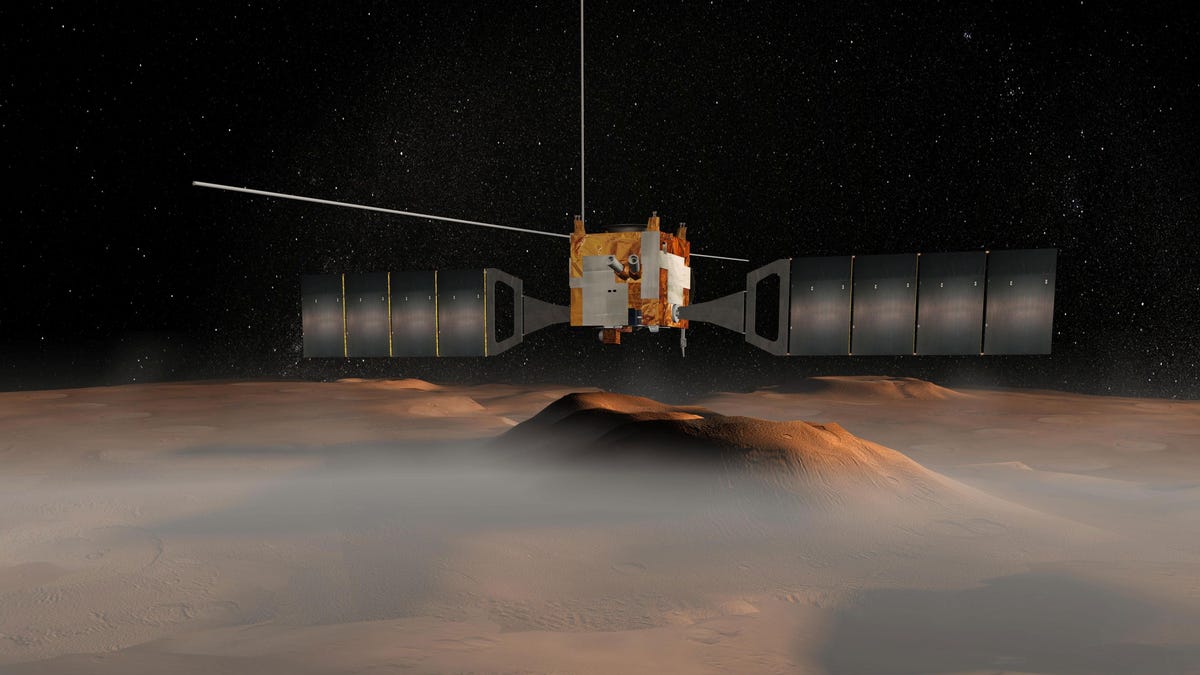NASA scientists have discovered more underground lakes on Mars


Researchers studying the layered sediments at the south pole of Mars have found what appear to be dozens of subterranean lakes, although many are in areas where water is freezing.
The research team measured the volume of these sediments, which contain alternating layers of dust, water ice and frozen carbon dioxide. dry snow The layers contain the climatic history of Mars. When the planet’s tilt was slightly different, winter conditions formed the permafrost that scientists now examine with surface-penetrating radar. (Like Earth, Mars had its own ice ages, the most recent of which originated 400,000 years ago. Discover the magazine He has a wonderful explanation of how the tilt of the planet affects its seasons and weather.) The team’s results have been published in Geophysical Research Letters Earlier this month, they followed up on the 2018 discovery of water ice under the planet’s south pole.
“We’re not sure if these signals are liquid water or not, but they appear to be more prevalent than the original study,” said Jeffrey Plaut, a research scientist at NASA’s Jet Propulsion Laboratory at NASA. Release from the agency. “Either liquid water is common under the south pole of Mars, or these signs are indicative of something else.”

Radar, directed at Mars from the MARSIS instrument aboard the European Space Agency’s (ESA) Mars Express orbiter, bounces differently depending on the material it hits, and water is a strong reflector of radar waves. The radar that bounced off the South Pole came back bright, evidence of liquid water or water ice underneath. Water ice on Mars is old news these days, but the exact amount present is unknown. In 2019, a A large amount of water ice below the North Pole, and earlier radar signals hinted at a stretch of liquid groundwater in a strip 10 to 20 kilometers from the planet’s south pole. But Plott and co-author, Aditya Khuller, found dozens of bright reflections across the pole in a much wider area than previously thought, some of which indicated the discoveries were less than a mile below the surface of Mars. But those detected areas are also located in cold regions of about -63 degrees Celsius, which means that the water will freeze.
Citando un estudio From 2019 who investigated how liquid water occurs at the poles, Kholer noted, “It would take twice the estimated geothermal flow of Mars to maintain this liquid water. One possible way to get that amount of heat is through volcanoes. However, we haven’t really seen There is no strong evidence of recent volcanic activity in Antarctica, so it seems unlikely that volcanic activity would allow liquid groundwater to exist throughout this region.”
We may have to put rover Or another probe at the south pole of Mars to better explore the geophysics of those icy corners of the planet. In 1999, Mars Polar Lander NASA and its probe, called Deep Space 2, went to Mars to do this, but unfortunately, the instruments were lost upon arrival.

“Evil coffee nerd. Analyst. Incurable bacon practitioner. Total twitter fan. Typical food aficionado.”

:quality(70):focal(288x128:298x138)/cloudfront-us-east-1.images.arcpublishing.com/metroworldnews/4VWFN4IMGFGQTCCSYSVPIJDM4A.jpg)









